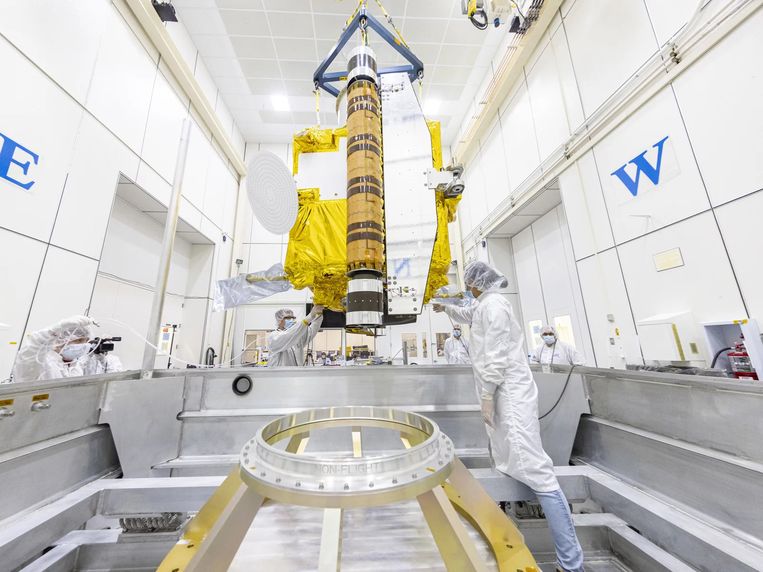1. Why would we shoot an innocent piece of space rock?
In a talk eagerly shared on social media last year, Jokers said, See you soon ‘Calendar’ With disasters planned for 2020. After the current pandemic, we will soon have every other horror Hollywood scenario on our surface: from massive volcanoes erupting to brawls with aliens and smashing space rocks.
Although we have so far escaped this fate, smashing a space rock like this is already a dangerous scenario. Look at the craters on the earth, the cosmic scars left by previous shocks, and you know that such a thing is not a question of if, but when. This is why NASA is launching the unmanned Dart probe early tomorrow morning (Belgian time) as a test.
2. What exactly will Dart do?
The probe crashes into the surface of Demorphos at a staggering 22,000 kilometers per hour in the name of science. This space rock is about 160 meters in diameter and is currently 481 million kilometers from Earth.
The impact should slightly alter the asteroid’s orbit. We hope that in the future we will also be able to propel space rocks on a collision course with Earth into a safe orbit. However, Dimorphos itself does not pose a danger.
The launch is a technical test. NASA is testing a new type of space engine and self-targeting system on the Dart. Orienting the probe is quite a challenge, because the asteroid can only be seen an hour before impact as a point about the size of a single camera pixel.
Dart should also help calibrate computer models that describe how asteroids would deal such a blow. For example, a group of loosely packed cosmic pebbles react differently than a solid piece of rock.
Scientists are monitoring the impact, which will occur between September 26 and October 1, 2022, from Earth using telescopes. An Italian probe (LICIACube) also flies to take pictures. Finally, three years later, the ESA Hera probe will follow, which will record the resulting crater in more detail.
3. How often do dangerous asteroid collisions occur?
The cosmic giant that killed the dinosaurs 65 million years ago is famous, but such effects are rare. Scientists believe that such a massive – a “dinokiller” that was probably about ten kilometers wide – hits the Earth only once every 100 to 200 million years. Currently, none of the four nearby asteroids of similar size is on a collision course with our planet.
But small stones can also cause misery. Notorious is the impact that occurred in the Russian city of Chelyabinsk in 2013. An eighteen-meter-high example unexpectedly exploded over the city. The resulting pressure wave destroyed windows outside buildings over an area of tens of kilometers, causing 1,600 injuries (no deaths) and damage estimated at 25 million euros. Asteroids of this size descend to Earth approximately once every 100 years.
Dart is particularly suitable for defending asteroids the size of Dimorphos – larger than the Cheljabinsk meteorite, but much smaller than a dinokiller. Experts estimate that it falls once every 20,000 years.
The chance is by far that such a rock will hit an ocean, desert, or other unpopulated or sparsely populated area. But with some bad luck, he unceremoniously reduced the capital to ruins. By the way, astronomers do not know any candidate for such space rocks with the possibility of “regional destruction”, as NASA euphemistically describes that it could affect us in the next century. But of the roughly 25,000 copies, only 39 percent of the track is known. So you better be prepared.

“Coffee buff. Twitter fanatic. Tv practitioner. Social media advocate. Pop culture ninja.”











More Stories
“Ask at least one question in return.”
According to research, people with this sleep rhythm live longer.
13 municipalities in the province of Seville have mosquitoes carrying the Nile virus